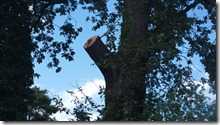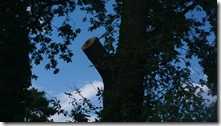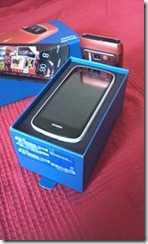 It arrived just as IFA was starting yesterday but in between frantic posting over at Ultrabooknews I’ve had at least a few hours with the Nokia 808. I even took a rare early morning ride out on the bike to do some testing today.
It arrived just as IFA was starting yesterday but in between frantic posting over at Ultrabooknews I’ve had at least a few hours with the Nokia 808. I even took a rare early morning ride out on the bike to do some testing today.
Ever since that ride I’ve been mulling over the 808 and its target audience. Talk about niche device, the 808 isn’t even priced as accessible right now so for anyone looking at connected photography, it’s quite an out-there choice. As the Symbian fan-base dwindles, I think we need to be honest and say that the 808 is unlikely to be as popular as the N8.
I won’t talk much about Symbian, the operating system, here. It beats most camera operating systems for usability and features but in comparison with phones that are half the price it’s less than dynamic. It does, I agree, do a great job with the basics. The phone is high quality, the MP3 player is great, build quality seems good and the screen is bright. The built-in free navigation and maps are still, in my opinion, better for in-car use than most other on-phone solutions.
Let me say something about the 2-sided camera though. On one side it’s a really high quality point and shoot. In both daylight and night the 808 will start-up quickly and get a good job done capturing rare photos ‘from the hip’ like no consumer camera can. Assuming you’ve kept the lens clean (an issue) the quality is right up there, right up at #1 in the cameraphone league table and comparable to a lot of point-and-shoot cameras. But it’s not much better than a Nokia N8 and in daylight even some of the newer Android phones will provide the same level of enjoyment. At this price, the 808 doesn’t really fit as a point and shoot, regardless of the technology that’s inside.
The other side of the camera is a more creative experience and absolutely unique among cameraphones. Given some experience and testing, you’ve got the opportunity to produce some very very high quality shots and to use some nice creative features. A bracketing mode means you can snap a set of photos for HDR processing. Manual ISO settings up to 1600 mean you can increase the shutter speed if needed for low-light photography. Xenon flash, full sensor images (rather than PureView processed 5Mp images) , intervalometer and more but it doesn’t quite extend into the areas that hobbyists use. There’s no shutter speed or F-Stop settings and no indication what’s been selected before you take the image. Zoom, which degrades minimally, isn’t quite what you expect too if you’re used to using optical zooms either. There’s no depth shortening. The advantage of the digital zoom is that there’s no loss of aperture as you zoom which helps keep the shutter speed high. But is this enough for creative types?
Of course there’s the key feature of on-camera editing and sharing to talk about and although the sharing system is a real mess, once all your accounts are linked (Flickr, YouTube, Facebook from the in-camera app, Twitter is available outside the camera and gallery app) it’s easy to get those photos or videos uploaded so the world can see them. In that respect, the 808 has some unique use cases and I’m sure that photo journalists, bloggers and anyone with time-critical media processes will be looking to see if the 808 can fit into their kit. Given that it fits well into the pocket (it’s a little heavier and bigger than most modern phones) it’s also highly available too. (Nokia should rent the 808 out to new parents, I’ve had some amazing moments with the N8 and my son over the last two years!)
I’m not sure that it matters if the 808 doesn’t fit into a wide customer based though. Nokia have proved the PureView project you’ll see the technology on Windows 8 Phones soon where it’s likely to find a lot more friends. Building up appreciation for PureView as a unique media offering makes a lot of sense and it appears to be working.
Meanwhile, I’m enjoying the Nokia 808 immensely and have another few months of long-term-loan in which I can test apps and any firmware upgrades that become available. I’ve already proven to myself that a high-quality camera in my pocket is important for me and I’ll have no problem finding places to use this one.
As for the rest of the device, keep watching. There’s a very nice speed boost over the N8 (that doesn’t bring it into 2012 smartphone web speeds unfortunately,) I’m annoyed that the charging input is on the top (in-car use) and likewise for the microSIM card. Wi-Fi reception seems even stronger than the N8, the screen is incredibly bright and I like that it has a replaceable battery (for carrying a pre-charged spare.) There’s a lot more to learn though so keep any eye out for more posts about the 808 in the near future.
Let me know if you have an 808, ask questions and rant-on in the comments below.
Three images below plus one poor attempt at HDR. More Originals on Flickr.
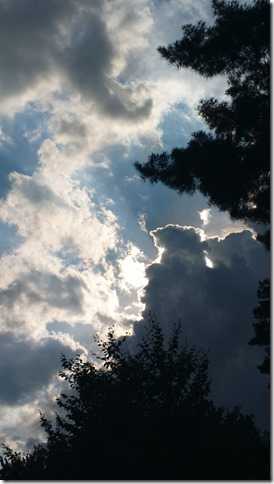
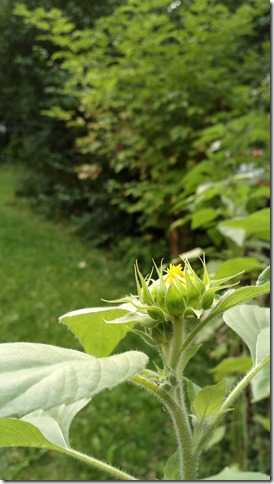

Here’s a very quick and dirty HDR photo from three handheld bracketed images generated automatically by the Nokia 808. Processed on Corel Paint Shop Pro X4. You can see the effect of the slight differences in the handheld images. It’s horribly over processed too! I’ll be getting a clamp for the 808 soon so I can do this properly.

